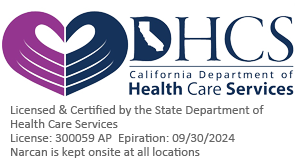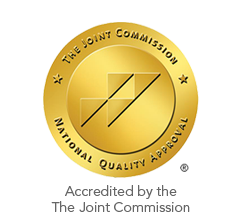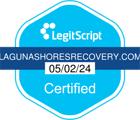Klonopin Rehab at Laguna Shores Recovery
At Laguna Shores Recovery our Klonopin rehab is tailored to help those who have struggled with addiction to prescription medication. Our Mission Viejo addiction treatment program is designed to support the patient with a specialized plan customized to their individual needs. Our goal for every patient is to provide them the tools and skills that will lead to lasting recovery.
People also obtain the drug illegally. In 2011, DAWN (Drug Abuse Warning Network) reported that over 61,000 people were admitted to hospital emergency rooms because of bad reactions during recreational clonazepam use.3 Two of the most commonly seen drug abuse-related emergency room cases involved opiate and opioid pain medications and benzodiazepines.
Brief History of Klonopin
Since 1975, it has been a top selling drug year after year. In 1997, it was approved in the United States for the treatment of epilepsy. More than 20 million prescriptions are filled every year for Klonopin and clonazepam.5
Other Names
Slang or street names include:
Klonopin Use and Abuse
- Lennox-Gastaut syndrome (petit mal variant)
- Absence seizures (petit mal)
- Akinetic seizures
- Myoclonic seizures
- Unexpected panic attacks
- Worries about future panic attacks
- Frets over the consequences of the attacks
- Significant changes in their behavior related to panic attacks
Side Effects
The most common side effect is drowsiness.
Dizziness
Abnormal eye movement
Headache
Slurred speech
Fainting
Tremors
Nervousness
Numbness
Confusion
Sex drive changes
Depression
Hallucinations
Amnesia
Hysteria
Insomnia
Aggression
Psychosis
Anxiety
Reduced Academic Ability
Slow Reaction Time
Memory Problems
Faulty Judgement
Withdrawal
Tension: Tension and irritability, especially in the first several weeks.
Headache: Headaches, which can range between migraine strength to mild, are common.
Sleeplessness: It is typical to have a hard time falling or staying asleep in the early stages of withdrawal.
Serious Symptoms of Withdrawal
Serious symptoms of withdrawal can occur in some cases. More serious withdrawal symptoms may be experiences by people who have been:
- Taking high doses
- Taking the drug over a long period
- Abusing other drugs or alcohol while taking Klonopin
- Struggling with other mental health disorders
Serious symptoms of withdrawal include:
Sudden shaking can occur.
Happening only in rare cases, seeing things that are not there can happen during withdrawal.
High anxiety and stress can cause hostile reactions.
Nausea and stomach pain are common the first few weeks.
Heavy sweating can occur during the day. Night sweats can happen during sleep.
Dizzy and feeling off balance are common, short-term side effects.
Feeling very tired and a lack of motivation during withdrawal are common.
Confusion from poor cognitive functioning can happen during the first few weeks.
Without Klonopin, people suffering from anxiety can see an increase.
Depressed feelings are a common withdrawal symptom.
There is the possibility of developing more seizures when they stop taking the drug. This is especially true if they stop taking it too quickly.
Thoughts of suicide from depression can happen during withdrawal. Depression can lead to hopelessness and suicidal thoughts. Talk to your doctor if you feel suicidal.
Misconception: It’s a Prescription, So It’s Safe
Tolerance for clonazepam is another risk. Tolerance is where more is needed to feel the same previous effects. Tolerance can develop in just a few weeks, even if it is being taken as prescribed.
Treatment For Klonopin Use Disorder
Some individuals will enter outpatient treatment to continue their recovery journey. Others will need a more structured, highly supervised residential rehab setting. People struggling with addiction are provided individual and group therapy to address and resolve issues related to addiction.
If you or a loved one is struggling with a Klonopin addiction or dependency, seek professional help. Talk with your doctor or a reputable treatment center. With the right help, the pain and suffering of addiction can end. A rewarding and revitalized life is possible through recovery.

 Matthew Beck B.A, M.A, LMFT
Matthew Beck B.A, M.A, LMFT 


